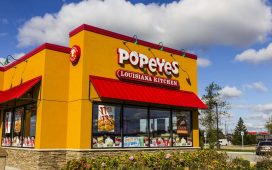Dive Brief:
- Closing out its fiscal year, Grove Collaborative announced the launch of a dedicated health and wellness hub, called Grove Wellness, per a press release. The company will sell a curated assortment of products from various brands through a space on its direct-to-consumer website, with plans to introduce more third-party brands throughout the year.
- Grove Collaborative also saw its fourth-quarter net revenue decrease 15% year over year to $74 million, according to a company press release Tuesday. The company’s gross margin was up 200 basis points from 2021, reaching 47%, while its net loss narrowed by 60.3% year over year to $12.7 million.
- The sustainability-focused company said it secured a $35 million asset-based revolving credit facility on Friday. The term loan is for up to three years and will support Grove’s “strategic initiatives and working capital needs.”
Dive Insight:
For Grove, its expansion into health and wellness categories is an effort to position the company for growth while providing shoppers with greater transparency regarding sustainability and ingredient quality.
“According to survey data, over 75 percent of our customers are currently buying wellness products and 89 percent of them trust Grove more than other brands to provide them,” CEO Stuart Landesberg said in a statement. “Our mission has always been to make consumer products a positive force for human and environmental health. The wellness industry is also larger than the home care industry and growing faster. This represents an incredible opportunity to advance our mission and grow our business.”
The creation of Grove Wellness was consumer-led, Landesberg told Retail Dive, with the company recruiting 100 members of its private Facebook group to provide input on the health and wellness categories.
In its effort to grow and reach profitability in 2024, Grove is also looking toward mergers and acquisitions. The company announced in November that it entered into an agreement with HumanCo Investments, with the goal of working together to identify one or more M&A opportunities that HumanCo would potentially fund with up to $100 million in capital.
On a call with analysts Tuesday, Landesberg said that while the company is focused on its journey to improve profitability as an independent entity, the company believes “the difficult macroeconomic environment will provide step change opportunities to advance our mission and create meaningful shareholder value over the coming quarters and years.” The HumanCo agreement will be used to identify those opportunities, according to Landesberg.
“We are actively in dialogue with probably half a dozen companies from categories we serve a little bit, to categories we have a reasonable presence in but believe we could do more,” Landesberg told Retail Dive. “That doesn’t mean any of those deals will end up getting done. You got to look at 500 deals to find the right one and we’ll be very choosy.”
While the company’s full-year results were ahead of guidance, Grove CFO Sergio Cervantes told analysts that total orders for the quarter were down 9% from the third quarter and 25% year over year, with active customers declining 6% compared to Q3 and 16% compared to 2021. However, Cervantes noted, DTC net revenue per order was up on a quarterly basis and year over year, reaching $63.04.
Grove’s path to profitability hasn’t come without obstacles.
In December, the company received a delisting warning notice from the New York Stock Exchange, just a few months after going public in June. The company was not in compliance with NYSE rules stating it must be trading at an average closing share price of at least $1.00 over a 30-day period. Grove was given six months to regain compliance, and its stock was trading at around 40 cents at the time of publication.
However, Landesberg is not worried about the company’s ability to regain compliance, noting that it could potentially be remedied through a reverse stock split.
“Companies that end up in this situation end up there for a number of different reasons,” Landesberg told Retail Dive. “Grove, I think, is here because it went public obviously at a time when the markets were shifting dramatically. … I lose zero minutes of sleep over this.”
Aside from growing its DTC website, the company has also been focused on expanding wholesale partnerships. In February, Grove announced it would begin selling select products on Amazon and at more than 1,000 Walmart stores. It also announced a wholesale deal with CVS in September, entering more than 2,000 CVS locations and the chain’s website.





